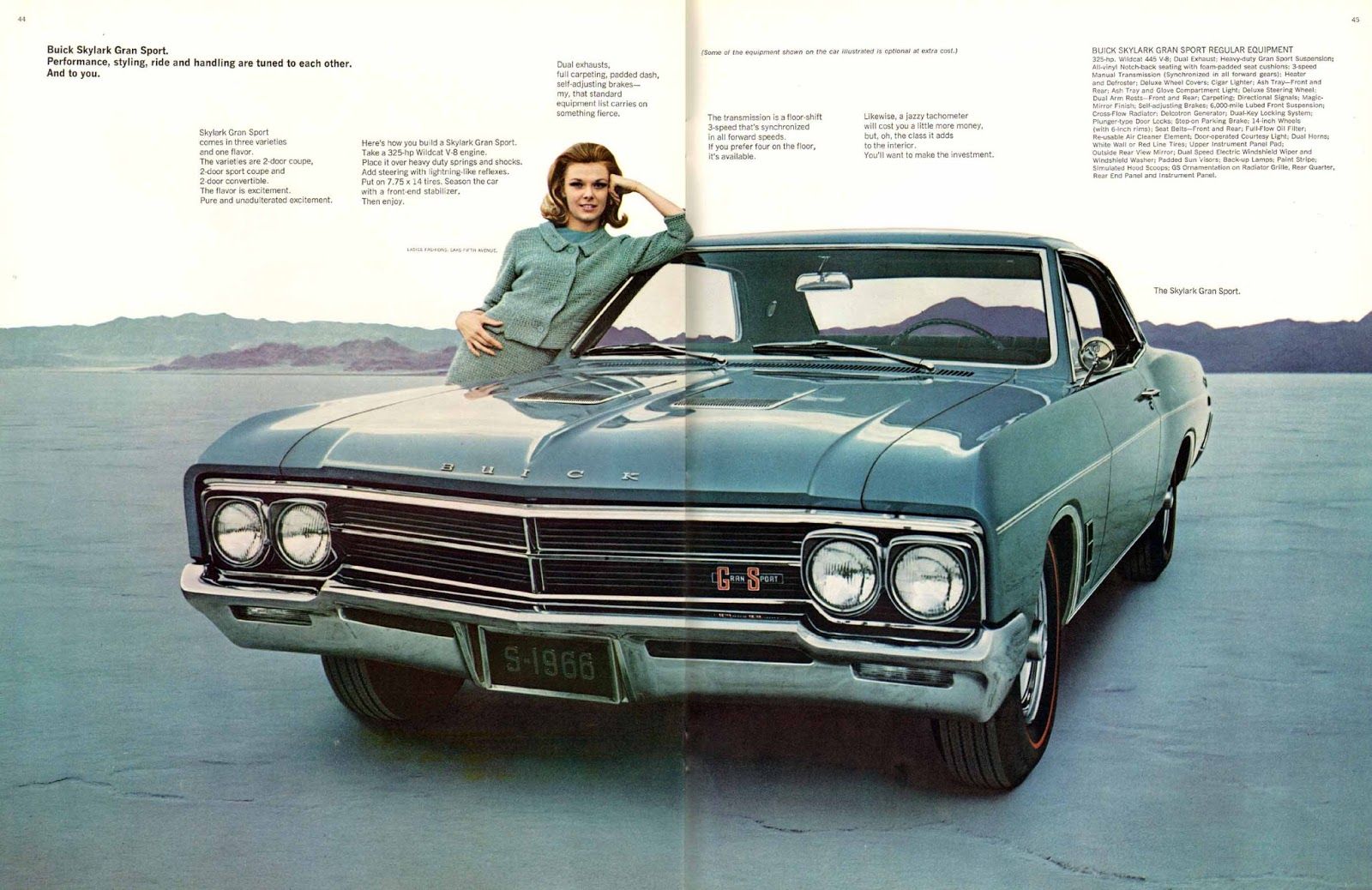
Image credit: Reynolds Buick GMC Isuzu, West Covina, California.
What’s in a name?
Ah the Gibson Skylark… could there be a guitar amplifier with a sweeter name? It conjures images of songbirds, flying in blue skies above green meadows; or perhaps of stylish vintage Buick cars, driven by equally stylish chauffeurs. Or perhaps, to some, sweet memories of the 1960s, when they were playing their favorite Byrds or Jefferson Airplane tunes through a little Gibson Skylark amplifier. Admittedly, I belong to neither category, but I must say that I had great fun restoring and playing a 1968 Gibson GA-5 Skylark amplifier.
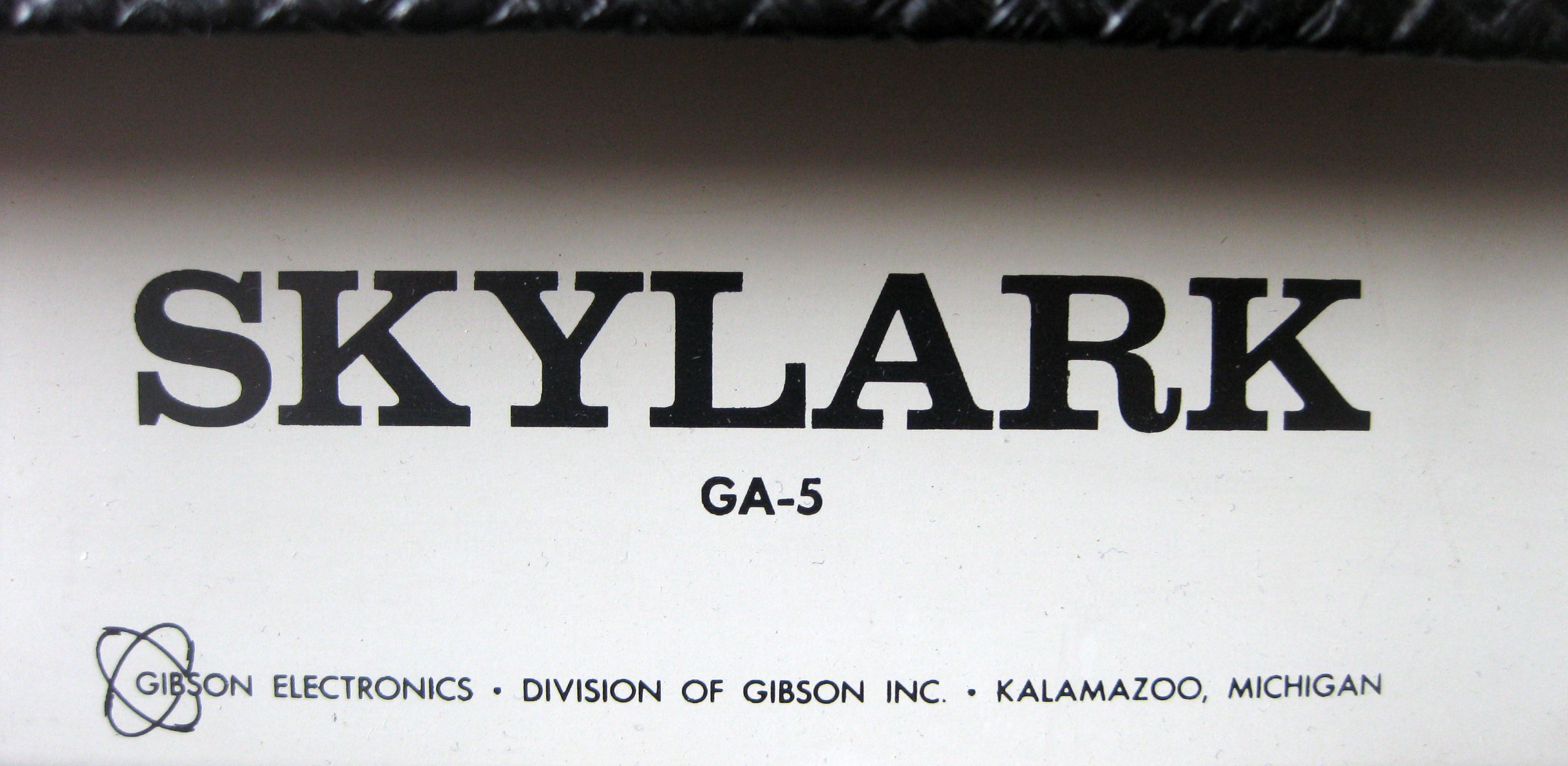
Skylark lineage
Until the late 1960s, the Skylark was probably Gibson’s most popular and most produced amplifier. As with almost any vintage Gibson amplifier, many different incarnations of it exist. There is, for starters, the 1957 GA-5 Skylark, which was in fact a restyled Gibson GA 5 Les Paul junior amp. The Les Paul junior, in turn, was a single ended, 6V6GT powered amp and almost identical to the Fender Champ (5C1 circuit). But back to the 1957 Skylark: this little amp came clad in blonde tolex instead of the Les Paul junior’s tweed and abandoned the previous ‘TV’ styling. Them, from 1962 on, the more modern and higher-powered ‘Crestline’ Skylark made its appearance. This had a slanted front/top control panel, brown tolex and grille, 2 x 6AQ5 output tubes and on-board tremolo. A good impression of the Gibson Crestline look may be obtained from the GA-60 Hercules that we recently serviced.
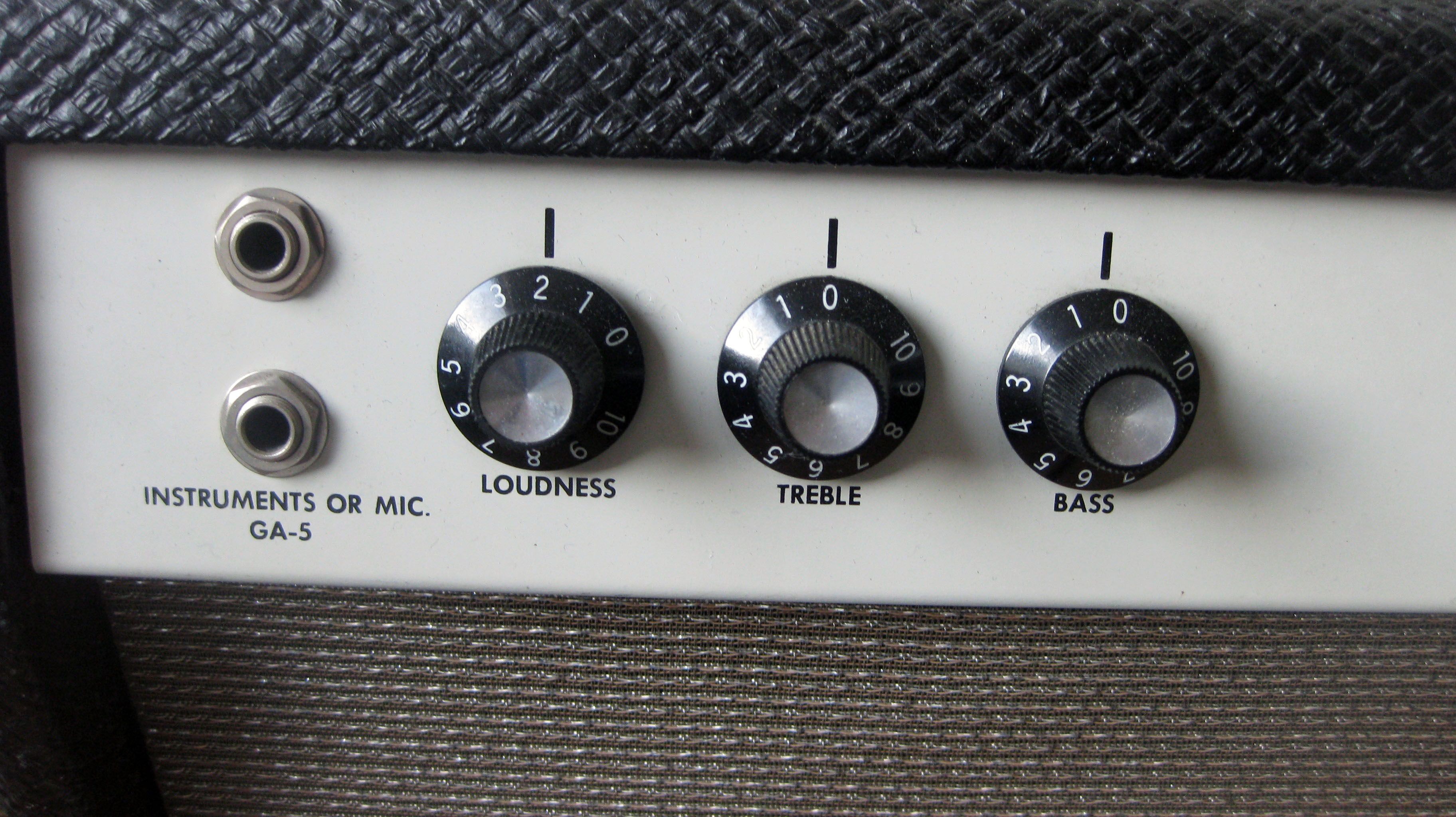
Our Skylark, however, was a ‘white-panel’ Skylark, a newer version that had succeeded the Crestline models and was produced from 1965 to 1967. It featured front mounted bass and treble controls on a white steel chassis and a 10’’ speaker. The exterior is covered in course ‘crocodile skin’ tolex and, contrary to the GA-5T, the amp has no built-in tremolo and just three tubes: a 12AU7 in the pre-amp and two 6BQ5s (the US designation for EL84s) in push-pull configuration in the power amp. Should you wonder how it is possible to build a push-pull amp with just one pre-amp tube: Gibson did that by employing a little inter-stage transformer as a phase inverter! An elegant solution which also reduced the number of components. And the 1967 GA-5 had very few components anyway.
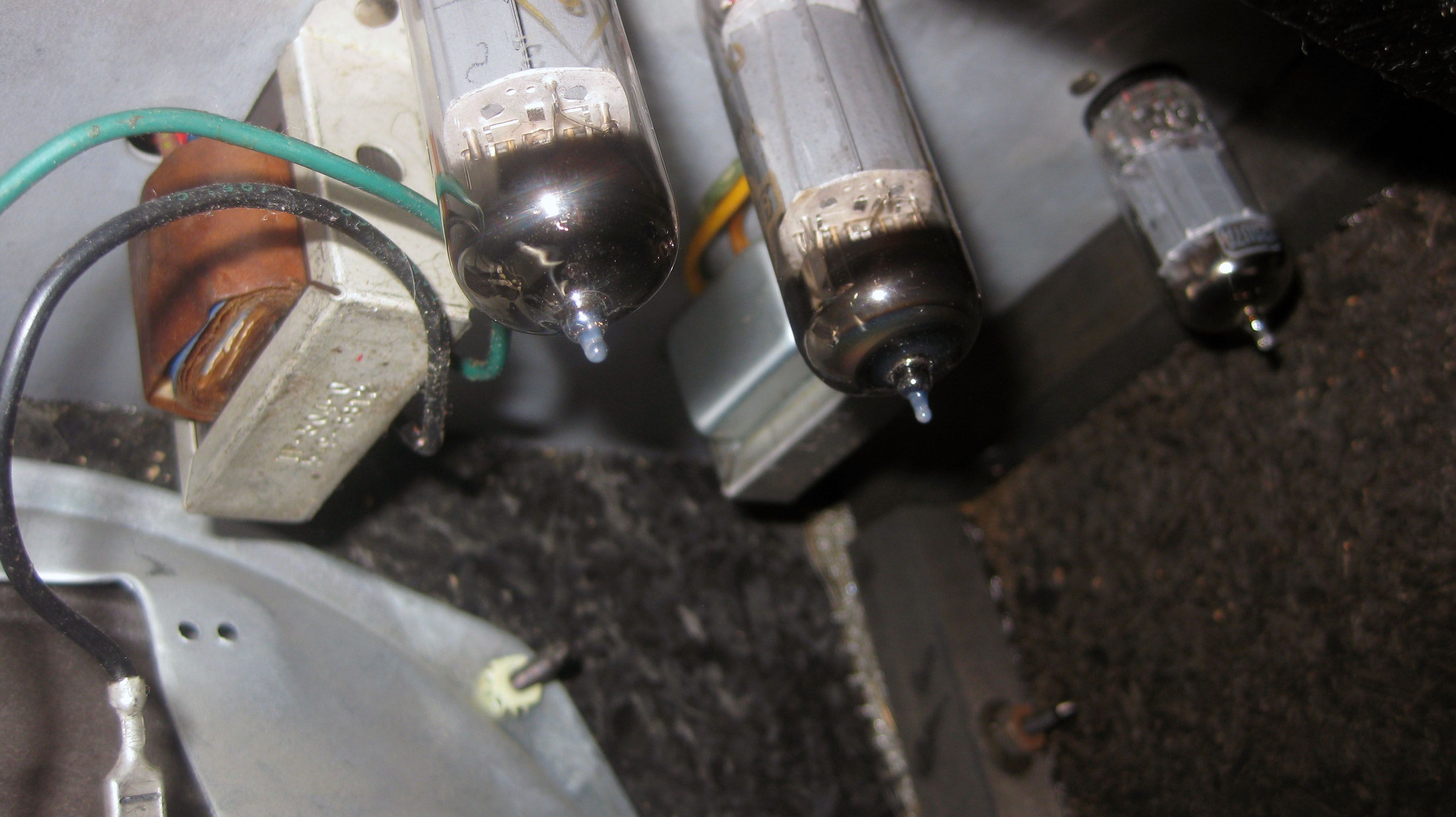
How does that bird sing?
Unfortunately, plugging in did not directly provide an answer to that, but resulted in a loud hum with only some faint guitar sounds in the background. Not what you’d expect from a Skylark! As changing the tubes made no difference, it was obvious that the amp needed to be serviced. Based on a thorough inspection, we estimated that it would be best to restore the amp to mint condition and make it safe to play in 21st century standards by:
-
Replacing all electrolytic capacitors in the amp.
-
Replacing the power chord with a three-prong, grounded version; the insulation of the old chord had gone porous and the amp originally didn’t have a ground connection.
-
Removing the so-called ‘death capacitor’; for an explanation, check out this useful YouTube clip.
-
Mounting a new leather handle, as the old one had partly perished over the years and could break at any moment now, potentially dropping the amp to the floor.
-
Buying and installing a set of NOS (New Old Stock) tubes. We took the finished amp to Triple M Audio Shop in Rhenen. After discussing with the friendly folks over there and having heard several different options from their wide selection of NOS tubes in our amp, we went for a vintage RCA 12AX7 and two (matched) Russian military spec EL84s.
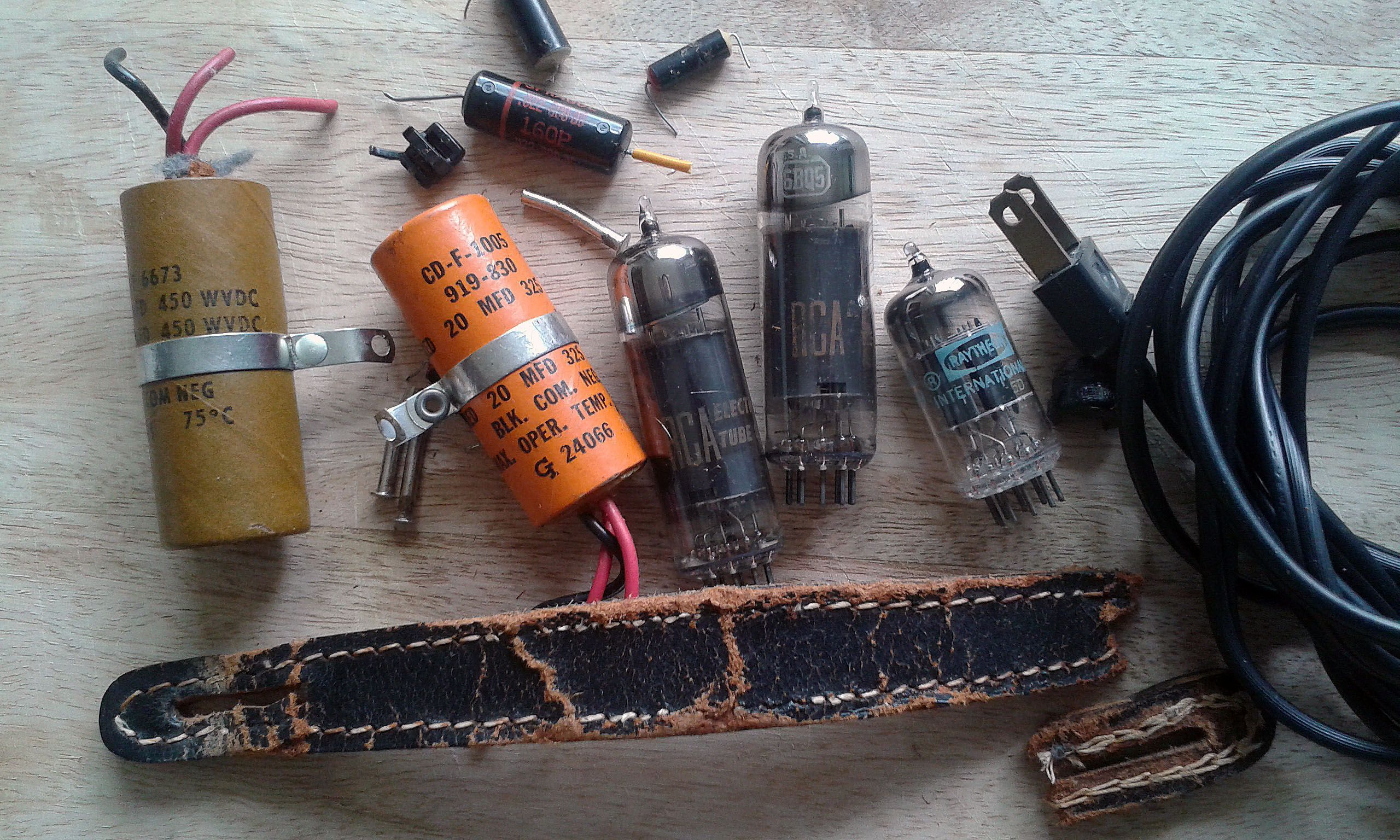
Taking it for a spin
Having done all this, we had ended up with a great sounding and very quiet amplifier (and a little pile of scrap parts, picture above). It was time to take our Skylark for a spin! One of its greatest assets appeared its very pure and direct sound, attributable to the small number of parts that the sound passes before reaching the speaker. Further, the Skylark has just enough power for playing live, in a jazz combo setting with a relatively quiet drummer. Turning up the volume to the required level for that however resulted in a mildly overdriven sound.
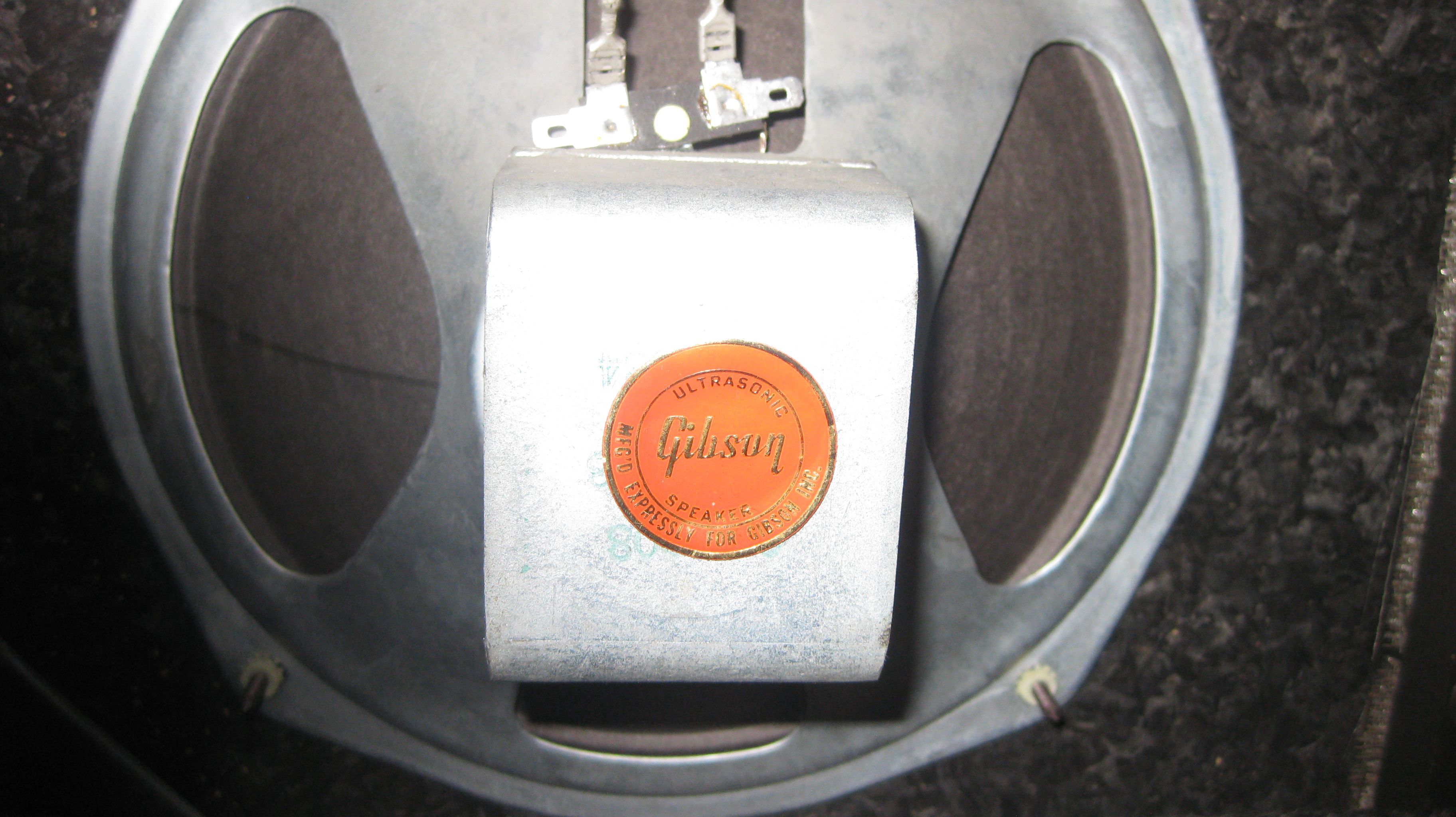
Further thoughts
If a cleaner sound with more headroom should be required, replacing the original speaker with a more efficient version should provide just enough headroom. A new speaker could also give the amp a bit more oomph in the bass range perhaps. However, before we had the opportunity to experiment with this, the amp was sold on to an enthusiastic new owner. Due its light weight, great sound and sufficient power, it is an ideal amp for bringing to jazz jam sessions, small gigs or even large gigs, when miked!
